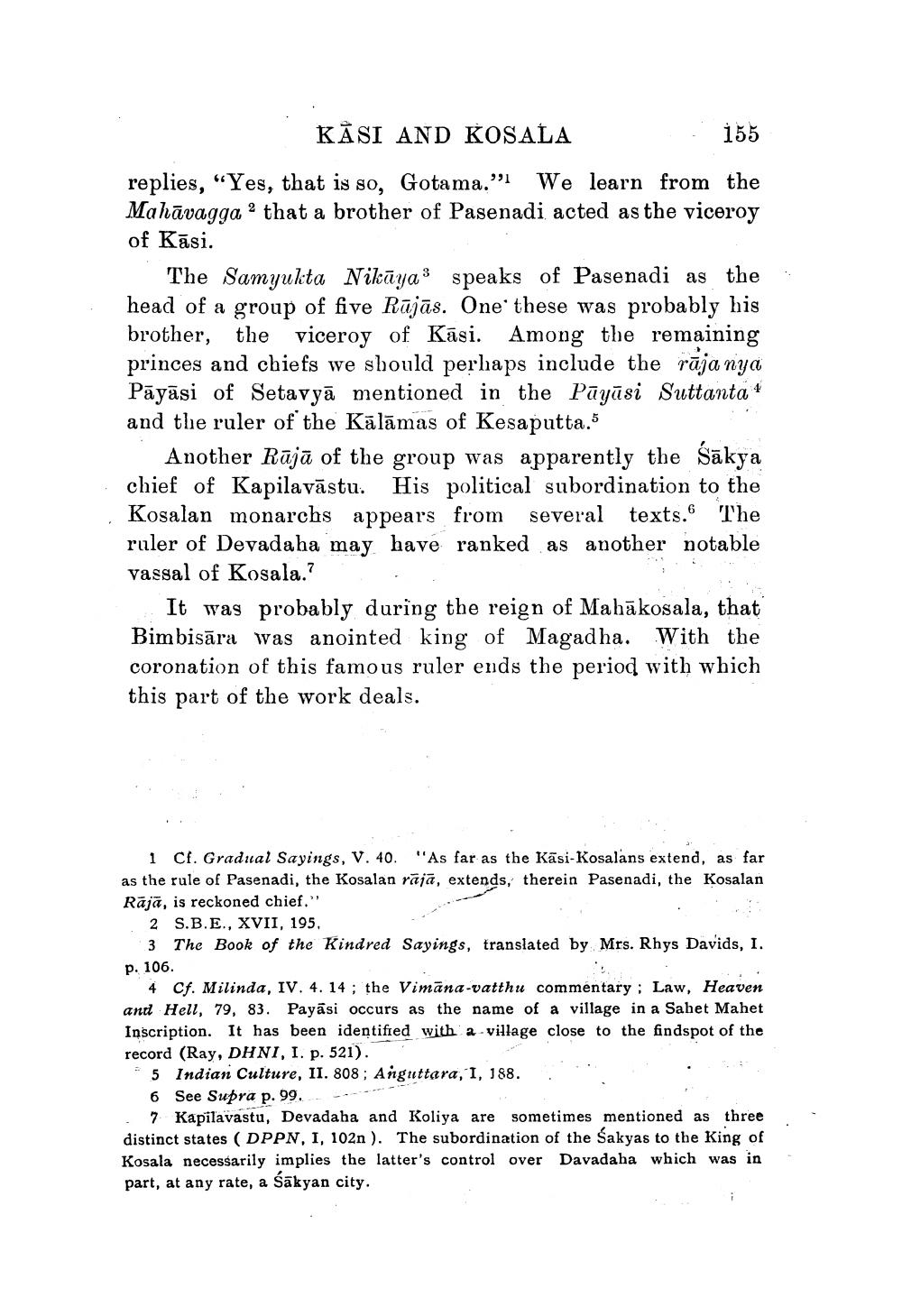________________
KASI AND KOSALA
155
replies, “Yes, that is so, Gotama." We learn from the Mahāvagga ? that a brother of Pasenadi acted as the viceroy of Kāsi.
The Samyukta Nikāya3 speaks of Pasenadi as the head of a group of five Rūjās. One these was probably his brother, the viceroy of Kāsi. Among the remaining princes and chiefs we should perhaps include the rāja nya Pāyāsi of Setavyā mentioned in the Pāyāsi Suttanta * and the ruler of the Kālāmas of Kesaputta.5
Another Rajā of the group was apparently the Sākya chief of Kapilavāstu. His political subordination to the Kosalan monarchs appears from several texts. The ruler of Devadaha may have ranked as another notable vassal of Kosala.?
It was probably during the reign of Mahākosala, that Bimbisāra was anointed king of Magadha. With the coronation of this famous ruler ends the period with which this part of the work deals.
1 Cf. Gradual Sayings, V. 40. "As far as the Kāsi-Kosalans extend, as far as the rule of Pasenadi, the Kosalan rājā, extends, therein Pasenadi, the Kosalan Rājā, is reckoned chief."
2 S.B.E., XVII, 195,
3 The Book of the Kindred Sayings, translated by Mrs. Rhys Davids, I. p. 106.
4 Cf. Milinda, IV. 4. 14; the Vimāna-vatthu commentary : Law, Heaven and Hell, 79, 83. Payāsi occurs as the name of a village in a Sabet Mahet Inscription. It has been identified with a - village close to the findspot of the record (Ray, DHNI, I. p. 521). - 5 Indian Culture, II. 808 ; Anguttara, 1, 188.
6 See Supra p. 99.
7 Kapilavastu, Devadaha and Koliya are sometimes mentioned as three distinct states (DPPN, I, 102n). The subordination of the Sakyas to the King of Kosala necessarily implies the latter's control over Davadaha which was in part, at any rate, a Sakyan city.




